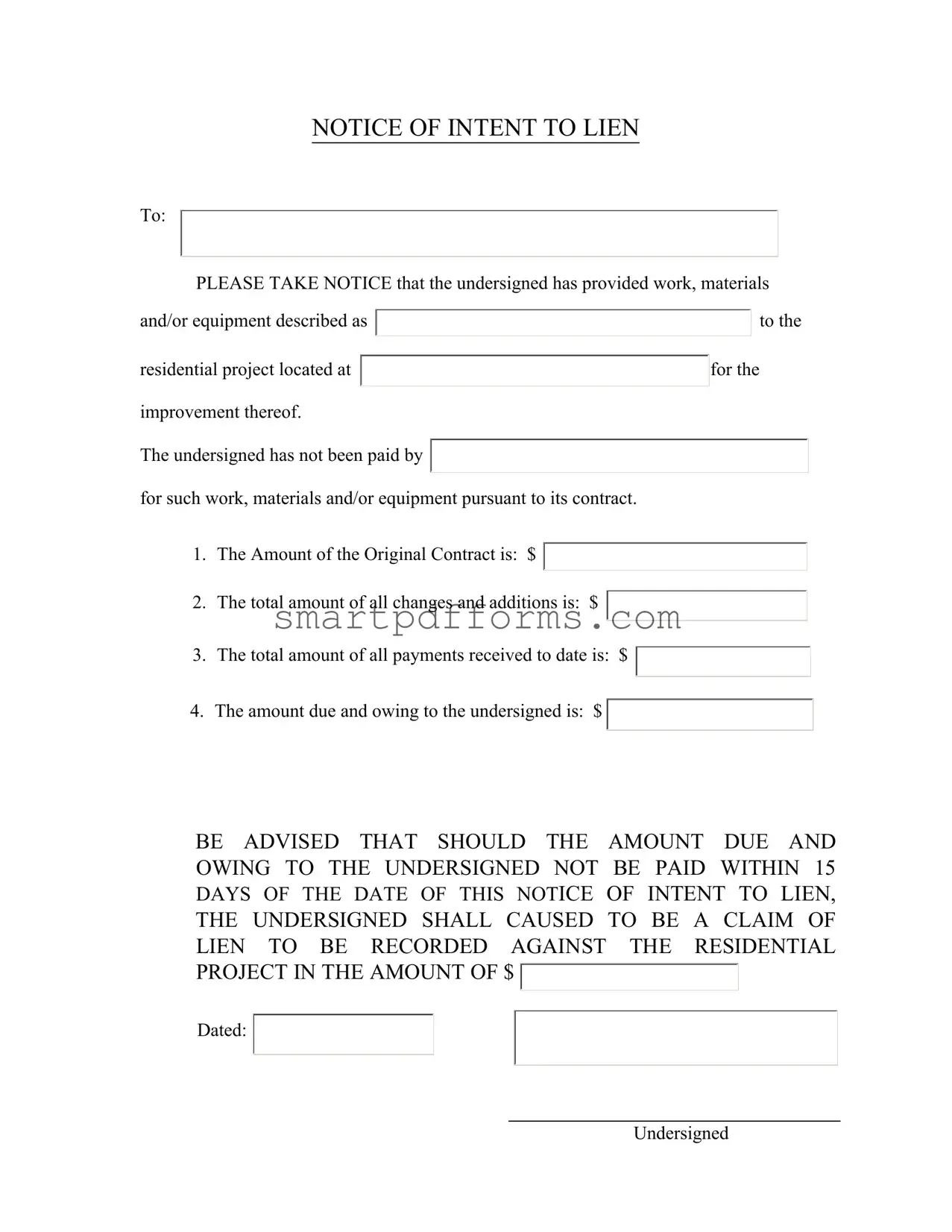Blank Letter Of Lien PDF Template
A Letter of Lien form is a formal document used to notify a property owner that the sender intends to place a lien on a property due to unpaid work, materials, or equipment provided for improvements to that property. It outlines the amounts involved in the original contract, any additions or changes, payments received, and the outstanding balance. If the amount due isn’t paid within a specified period, a lien will be claimed against the property. Discover how to properly fill out and utilize this essential form by clicking the button below.
Make This Document Now



